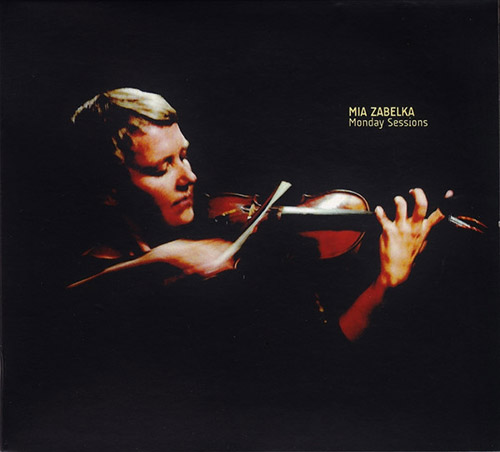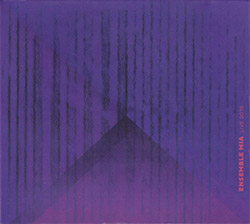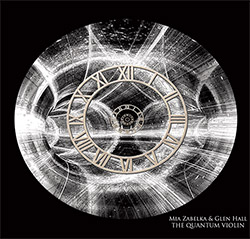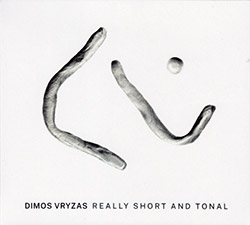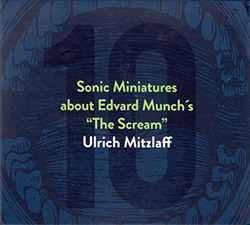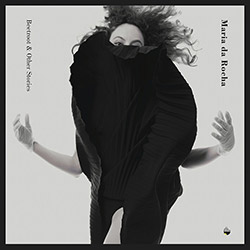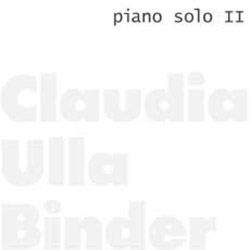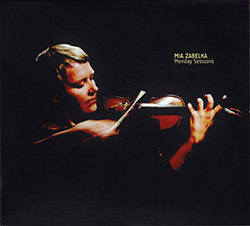
"5th January, 12th January, 19th January, 4th February of the year 2015 have a thin red line (or I'd rather say a black line, considering their color on a calendar). They occurred on Monday, the first five Mondays of that year to be pre...
Save $1.60
In Stock
Quantity in Basket: None
Log In to use our Wish List
Shipping Weight: 2.00 units
Sample The Album:
Mia Zabelka-violin
Click an artist name above to see in-stock items for that artist.
UPC: 5609063403206
Label: Creative Sources
Catalog ID: cs320
Squidco Product Code: 21651
Format: CD
Condition: New
Released: 2015
Country: Portugal
Packaging: Cardboard Gatefold
Recorded at Klanghaus Untergreith, Austria, on January 5th, 2015,
January 12th, 2015,
January 19th, 2015,
February 4th, 2015, by Zahra Mani.
"5th January, 12th January, 19th January, 4th February of the year 2015 have a thin red line (or I'd rather say a black line, considering their color on a calendar). They occurred on Monday, the first five Mondays of that year to be precise during which Mia Zabelka decided to record these ten improvisations at Klanghaus in Untergrieth, a small village in southern Austrian Styria using her acoustic violin. I don't know if she got somehow influenced by the typical aversion (if not real idiosyncrasy) that working people are generally supposed to feel against the first day of the week, as part of the dramatic stages she masterfully manages to evoke by the awesome way she plays violin or her voice (one of the funniest moment of this release is the vocal track "Oscillations", a whirlpool of mourns, sneers, suffocated wails, choked shrieks, neighs, hiccups, whose extreme and fast-rolling changes could let you think a jester having some epileptic fit) sound perfect for the mindset ofpeople, who got influenced by such a figment of calendar-related imagination. It's pretty bizarre a cliche got evoked by a performing style, the one by Zabelka, which completely avoids cliches, as highlighted by the introductory words of the inner meaning of Mia's improvising by well-known guitarist John Russel printed on the inlay: "We are improvisers to the core, acknowledging an 'everthen that everwas' while constantly trying to subvert and go beyond the mundane. The core of the music is found at any point and is completely malleable making the musical choices that provide a 'narrative' a uniquely personal experience.". Violin tones could get matched to wood-shavings during a sawmilling intended to turn a log into sawdust in "Concentring Circles" or 'flavour enhancers' for the staggering pace of some performative escalations - in tracks like "Imminent Disaster", "Papagei" (German for 'parrots', a funny tracks where Mia seems to emulate those cute birds by the integrated use ofviolin and voice) or the opening "Dunkles zu sagen" - or tonal expectorating of introspections and mental convolutions ("Stream of Consciousness", "Remembrance"). They sometimes disappear to acquire a percussive functions in tracks where Mia seems to exploits the 'hidden' percussive or noisy features of violin, as it happens on "Stroemungen," "Entfremdung" (a German word whose translation could describe such an extended use of violin, as it could be translated both as alienation or estrangement and as an exception of the destination for purposes that are different from the intended one!). Mia's outputs can also be listened and enjoyed during other days of the week."-Vito Camarretta, Chain DLK
Artist Biographies
• Show Bio for Mia Zabelka "Mia Zabelka is a sound artist, violinist and vocalist from Vienna, who creates hauntingly sensual music and is regarded as one of the leading 21st century proponents of what is known as experimental violin music. Mia Zabelka's projects show her exceptional mastery and a deep understanding of the violin, be it acoustic or electric, solo or as part of a collective. In her hands the boundaries of this instrument fade and paths to uncharted sonic territory open, as she bends genres, the conventional use of electronics and the human voice to expand the spectrum for her to paint her musical language in. Live in concert Mia Zabelka is an electrifying performer. In any context, she has the uncanny knack of commanding the stage and always being the centre of an audience's attention, achieved by the intensity and focus of her performances, rather than any gratuitous showmanship. At the age of seven, Mia Zabelka discovered the violin. She was eager to find out how this musical object could produce interesting sounds when touched with a wooded stick strung with horsehair. Zabelka was already able to play works by the fabled virtuoso Nicolo Paganini in her first year of instruction on the instrument and at 12 was the youngest member of the Austrian Youth Orchestra. During her classical training with Alexander Arenkov, an assistant of David Oistrach, at the Vienna Conservatory of Music, she already began to play with various jazz and rock bands. With her inborn curiosity for the new and all that was unexpected Mia Zabelka then turned to the study of electroacoustic music at the University of Music and Performing Arts in Vienna , creating a foundation on the basis of which she continues to construct and explore the limits of sound and music in a language entirely her own. She has now developed a unique language based on the de- and reconstruction of the violin's sonic possibilities for over 20 years, expanding the range of the instrument using live electronic devices, preparing it through the insertion of alien objects between or on the strings and innovative performance techniques. Mia Zabelka describes this process as Automatic Playing, continuously exploring sound and music as physical phenomena, always pushing back the boundaries in experimental performances and compositions that question established notions, improving the available techniques and given structures. Her openness to the most varied musical directions and eclectic artistic influences have resulted in collaborations with numerous prominent international artists including John Zorn, David Moss, Pauline Oliveros, Elliott Sharp, Dälek, Audrey Chen, Maria Chavez, Robin Rimbaud aka Scanner, Lydia Lunch and Electric Indigo among many others. She has been the artistic director of phonofemme Vienna, an international festival of female experimental music and sound art, since 2009. In 2007 Mia Zabelka founded the Klanghaus, a center for sound and interdisciplinary art at her house in southern Styria/Austria. The Klanghaus is a meeting point for international and local artists and hosts the Klang.Zeit festival four times a year." ^ Hide Bio for Mia Zabelka
4/17/2024
Have a better biography or biography source? Please Contact Us so that we can update this biography.
Track Listing:
1. Dunkles Zu Sagen 4:52
2. Concentric Circles 7:14
3. Oscillations 4:40
4. Stromungen 5:10
5. Imminent Disaster 4:54
6. Entfremdung 6:58
7. Stream Of Consciousness 9:54
8. Papagei 6:43
9. Remembrance 7:08
10. Nachtbild 2:56
Improvised Music
Free Improvisation
European Improvisation, Composition and Experimental Forms
Stringed Instruments
Solo Artist Recordings
Search for other titles on the label:
Creative Sources.


